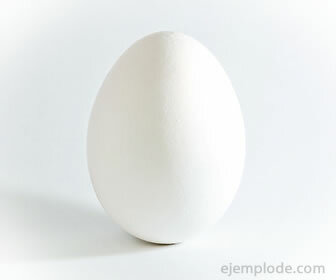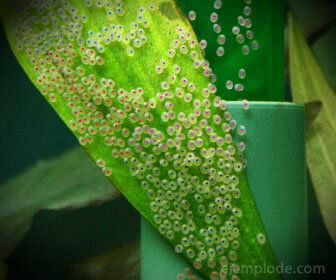Example of Oviparous Animals
Biology / / July 04, 2021
The oviparous animals are those whose reproduction process consists of the development of embryos within an egg out of the mother's womb. The amount of eggs that each animal lays depends on its own characteristics, there are animals such as turtles, which on average lay more than one hundred eggs and others like some species of birds that only lay on average six eggs.
Not all animals devote the same care to their eggs, in the case of birds, for example, they are dedicated to laying and protecting them in nests that they themselves make. While turtles, for example, what they do is bury their eggs in the sand.
In the case of fish and amphibians, they lay their eggs in the water covered by a kind of gelatin that has the specific function of protecting them.
Types of fertilization of oviparous:
Internally fertilized oviparous
This type of fertilization is carried out before the female deposits them outside, that is, the process occurs within the female's body.
Oviparous external fertilization
The eggs will be fertilized when they have been deposited by the females in the indicated place, so that the male fertilizes them by means of the sperm.
Categories of oviparous animals
Feathered animals
In this type of animal, they only manage to lay one or two already fertilized eggs, although there are some types of birds that lay more. Regardless of the quantity, if the conditions are not given for its full development, it is very unlikely that survive, hence the importance not only of the elaboration but the protection of the nests by the mother.
It is for this reason that mother birds spend a lot of time caring for their eggs and after hatching, so that they can survive and develop properly.

Amphibians and Reptiles
Some animals that fall into this category are frogs and salamanders. These types of animals lay their eggs in the water since they require constant humidity, in addition to not having a strong shell as in the case of birds. These types of animals lay a high number of eggs that exceed one hundred, by the rule that there is a low probability of survival of the eggs.
Fishes
This type of animal leaves its eggs in the water, so that the male proceeds to fertilize them through the release of sperm and proceed to the gestation process.
As in the case of the reptile category, these types of animals lay a high number of eggs due to their low survival rate.

Arthropods
In this category we can find animals such as arachnids, scorpions, cockroaches, lobsters and crabs, to name a few. Many of these animals to participate in the fertilization process, what they do is fertilize them when a sexual relationship occurs.
Mammals
It is important to note that most animals in this category are viviparous, however there is an exception to the rule, that is, there are the "monotremes" that are represented by two animals such as the "equigna" and the "Platypus."
100 examples of oviparous animals
1. Eagle
2. Spider
3. Ostrich
4. Hornet
5. Slugs
6. Cod
7. Owl
8. Squid
9. Shrimp
10. snail
11. Woodworm
12. Large tent
13. Bug
14. Cicada
15. Mojarra
16. Alligator
17. Quail
18. Springtails
19. Hummingbird
20. Lacewing
21. Cockroach
22. Raven
23. Water beetle
24. Graveyard beetle
25. Leaf beetle
26. Dung beetle
27. Rhinoceros beetle
28. Scorpion
29. Aquatic scorpion
30. Sturgeon
31. Chicken
32. Tick
33. Hawk
34. Swallow
35. Weevil
36. Cricket
37. Mole cricket
38. Macaw
39. Turkey
40. Meal worm
41. Silkworm
42. Hawk
43. Ants
44. Iguana
45. Goldfinch
46. Lizard
47. Locust
48. Dragon-fly
49. Firefly
50. Mantis
51. Owl butterfly
52. Cabbage butterfly
53. Machaon butterfly
54. O
55. White fly
56. Dung fly
57. House fly
58. Scorpion fly
59. Miner fly
60. Mosquito
61. Pigeons
62. Duck
63. Peacock
64. Silverfish
65. Parakeets
66. Blowfish
67. Clownfish
68. Penguin
69. flea
70. Aphid
71. Octopus
72. Toad
73. Frog
74. Salmon
75. Grasshopper
76. Toad
77. Sardine
78. Gadfly
79. Termite
80. Earwig
81. Turtledove
82. Turtle
83. Trout
84. Snake
85. Buzzard
86. Guppy
87. Molly
88. Half peak
89. Platy
90. Disk
91. Angel fish
92. Sardine
93. Piranha
94. Crane
95. Mockingbird
96. Egyptian vulture
97. Tuna
98. Black-tailed needle
99. Partridge
100. Petirojo
